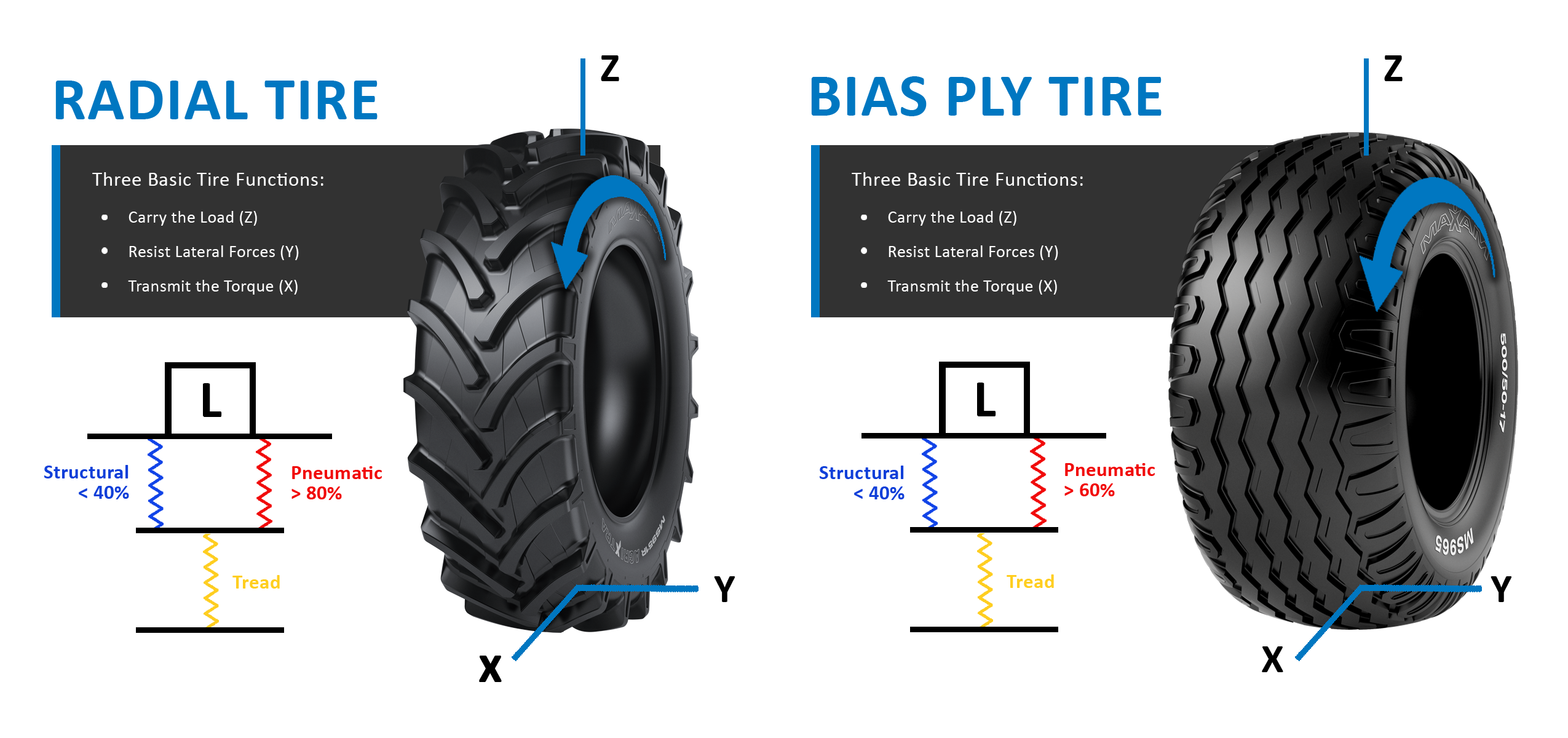MAXAM on Implement Tire Trends
MAXAM AG Technical Bulletin – Why are implement tires gravitating towards larger overall diameters with more varied tread (higher void ratio) and how do you see the segment evolving further?
Agriculture is a prime example of the Axiom: “Necessity is the mother of all invention”. Tire technology has evolved dramatically in the last twenty years in this unending quest to achieve greater crop yields to produce more food and greater profits. In the last twenty years we have since tire technology evolve from primarily bias-ply constructed carcass tires to radial constructed carcass tires capable of greater loads, from lug profiles at 23° now at 45°construct designed for improved wear and traction, and finally to IF or VF technology that has fundamentally changed the tire load capability without changing tire geometry. The agricultural industry has been quick to see the value and benefits of the above tire technology in powered equipment but reticent to adopt the same solution for the non-powered towed implements that carry out the work in the field. As a result, some of the benefits that could be achieved with tire technology on the powered equipment impacting soil compaction were completely negated by old tire technology used on implement operating at higher air pressures pressing against the soil as they rolled or were dragged through the field. Radial tires by design provide a larger “Gross Flat Plate” or footprint that distributes the tread evenly across the ground contact patch reducing soil compaction while simultaneously increasing the traction capability of the tire. As implements are becoming larger and heavier to increase field productivity their traditionally small tire wheelbases are evolving in the area to allow larger tires that can carry more load and reduce soil compaction. This trend has opened the door for radial tires with their larger air chamber to deliver performance solutions with new designs that depending on the need can incorporate either wider lug designs for greater road traction or larger lug to void ratios to increase field traction all the while reducing soil compaction. The agricultural industry is now evolving by necessity towards larger radial solutions for implement tires incorporating all the above lessons learned to ensure that towed equipment can effectively employ tire technology to achieve greater yields and profits. The primary difference in tire construct technology between bias-ply and radial tires is how each type of tire carries the load and displaces the soil:

All Ag tires are designed by size or footprint to fulfill following specific functions:
- Carry the Load
- Transmit the Torque (or driving power)
- Resist the lateral forces
- Allow the Chosen Equipment to fulfill its purpose whether in a powered or towed function
By design, radial tire construction accounts for 20% of the carcass load or pressure on the soil, while the compressed air in the tire chamber accounts for 80% of the carrying capacity. Whereas bias-ply constructed tires rely on 40% of their load-carrying capacity on their material and design construct.
The ongoing challenge to any grower looking to increase yields is to find solutions that reduce ground compaction by reducing the ground pressure pushing down into the soil ultimately compressing the soil:

As the need for greater yields and machine productivity is driving OEM’s to design and manufacture larger heavier implements to that can work the field faster, radial tires present a flexible solution for use on towed implements reducing soil compaction and improving crop yields. Therefore, the greatest trend in implement tires evolution is the transition from bias-ply constructed tires to radial constructed tires that will eventually employ IF or VF technology to achieve greater equipment loads without compromising soil compaction ensuring improved crop yields and greater profits.
MAXAM agricultural tires are designed to deliver an optimized footprint ensuring the best possible traction and flotation for the grower’s powered and towed vehicle needs. MAXAM’s growing family of Radial and Bias-ply tires delivers performance solutions tailored for the Ag Industry.
For additional information, contact your local representative or visit us at maxamtire.com.



